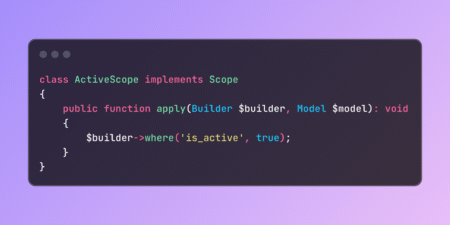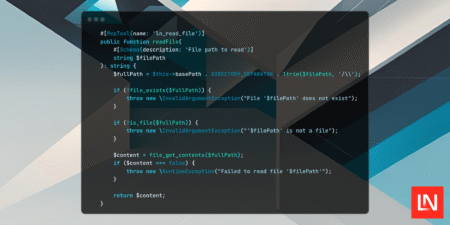In the ever-evolving landscape of software development, new terms and methodologies constantly emerge, reshaping how we think about and create technology. Recently, a phrase has been buzzing through the tech world, sparking both excitement and debate: “vibe coding.” While the idea of coding based on intuition or a “feel” isn’t entirely new, the term has gained significant traction and a more specific meaning in early 2025, largely thanks to influential figures in the AI space.
This article will delve into what “vibe coding” means today, explore its origins and core tenets, describe a typical workflow in this new paradigm, and discuss its potential benefits and inherent challenges. Prepare to look beyond the strictures of traditional development and into a more fluid, intuitive, and AI-augmented future.
What Exactly Is Vibe Coding? The Modern Definition
The recent popularization of “vibe coding” is strongly associated with Andrej Karpathy, a co-founder of OpenAI and former AI leader at Tesla. In early 2025, Karpathy described “vibe coding” as an approach that heavily leverages Large Language Models (LLMs). In this model, the developer’s role shifts from meticulously writing every line of code to guiding an AI with natural language prompts, descriptions, and desired outcomes—essentially, conveying the “vibe” of what they want to achieve. The AI then generates the corresponding code.
As Karpathy put it (paraphrasing common interpretations from early 2025 discussions), it’s less about traditional coding and more about a conversational dance with the AI:
“You see things, say things, run things, and copy-paste things, and it mostly works.”
This points to a future where the barrier between idea and functional code becomes increasingly permeable, with the developer acting more as a conductor or a curator of AI-generated software components.
So, is this entirely new? Yes and no.
- The “New”: The specific definition tying “vibe coding” to the direct, extensive use of advanced LLMs like GitHub Copilot’s agent mode or similar tools is a recent development (as of early 2025). It’s about a human-AI symbiosis where the AI handles much of the syntactical heavy lifting.
- The “Not So New”: The underlying desire for a more intuitive, less rigidly structured coding experience—coding by “feel” or “flow”—has always been a part of developer culture. Programmers have long talked about being “in the zone,” rapidly prototyping, or using their deep-seated intuition to solve problems, especially in creative coding, game development, or initial exploratory phases. This older, more informal notion of “vibe coding” can be seen as a spiritual precursor. Today’s “vibe coding” takes that innate human approach and supercharges it with powerful AI tools.
Therefore, when we talk about “vibe coding” today (in mid-2025), we’re primarily referring to this AI-assisted paradigm. It’s about effectively communicating your intent—the “vibe”—to an AI, which then translates that intent into code. The focus shifts from syntax to semantics, from meticulous construction to intuitive direction.
The Core Tenets of (AI-Augmented) Vibe Coding
Given this AI-centric understanding, the principles of vibe coding look something like this:
Intuition and Intent as the Primary Driver
The developer’s main input is their understanding of the problem and the desired “feel” or functionality of the solution. They translate this into natural language prompts or high-level descriptions for the AI. The “how” of the code generation is largely delegated.
Prompt Engineering is Key
Your ability to “vibe” effectively with the AI depends heavily on how well you can articulate your needs. Crafting clear, concise, and effective prompts becomes a critical skill, replacing some traditional coding skills.
Rapid Iteration and AI-Feedback Loop
The cycle is: prompt -> AI generates code -> test/review -> refine prompt -> repeat. This loop is incredibly fast. You can see your ideas (or the AI’s interpretation of them) come to life almost instantly, allowing for quick validation or correction of the “vibe.”
Focus on the “What” and “Why,” Less on the “How”
Developers concentrate on defining the problem, the user experience, and the desired outcome. The AI handles much of the underlying implementation details. The “vibe” is about the end result and its characteristics, not necessarily the elegance of every single line of generated code (though that can also be a goal).
Embracing the “Black Box” (to a degree)
While reviewing AI-generated code is crucial, there’s an implicit trust in the AI’s capability to handle complex boilerplate or even entire functions. The developer might not always delve into the deepest intricacies of every generated snippet, especially if it “just works” and fits the vibe. This is also a point of contention and risk.
Minimal Upfront Specification, Maximum Exploration
Detailed, exhaustive spec documents become less critical for the initial generation. You can start with a fuzzy idea, prompt the AI, see what it produces, and iteratively refine the “vibe” and the specifics as you go. It’s inherently exploratory.
Orchestration Over Manual Construction
The developer acts more like an orchestrator, piecing together AI-generated components, guiding the overall architecture through prompts, and ensuring the different parts harmonize to achieve the intended “vibe.”
A Typical AI-Driven Vibe Coding Workflow
Let’s walk through what a vibe coding session in this AI-augmented era might look like:
The Conceptual Spark
An idea for an application, feature, or fix emerges. The developer has a general “vibe” of what’s needed – “I need a simple web app to track my reading list, and it should feel clean and modern.”
Choosing the Right AI Tool
The developer selects their preferred LLM-based coding assistant (e.g., an advanced mode of GitHub Copilot, Cursor Composer, or other emerging tools).
The Initial Prompt & Generation
The developer crafts an initial prompt.
Developer:
Generate a Python Flask backend for a reading list app. It needs a PostgreSQL database with a 'books' table (title, author, status, rating). Create API endpoints for adding a book, listing all books, and updating a book's status.The AI generates a significant chunk of code.
Review, Test, and “Vibe Check”
The developer reviews the generated code. Does it look reasonable? Do the core structures align with the intended vibe? They might run it, test the endpoints (perhaps by asking the AI to generate test scripts too).
Developer (to self): “Okay, this is a good start, but the ‘status’ should be an enum: ‘to-read’, ‘reading’, ‘read’. And I want a ‘date_added’ field.”
Refinement through Iterative Prompting
The developer provides feedback and further instructions to the AI.
Developer:
Refactor the 'books' model. Change 'status' to an enum with values 'to-read', 'reading', 'read'. Add a 'date_added' field that defaults to the current timestamp. Also, generate a simple HTML frontend using Bootstrap for listing and adding books that calls these APIs.The AI revises the code and generates the new parts.
Integration and Manual Tweaks (if necessary)
The developer might still need to do some light manual coding to connect pieces, adjust styles, or fix minor issues the AI missed. The goal is for the AI to do the bulk of the work.
Achieving the “Vibe” or Reaching a Milestone
This iterative process continues until the application meets the desired “vibe” and functionality, or a significant milestone is reached. The developer has guided the AI to create something that aligns with their initial, perhaps fuzzy, vision.
This workflow is highly dynamic. The developer is in a constant dialogue with the AI, shaping the output by refining their “vibe” into increasingly specific prompts.
Where AI-Driven Vibe Coding Shines (The Pros)
This new approach to coding offers several compelling advantages:
- Accelerated Development & Prototyping: Generating boilerplate, standard functions, and even complex algorithms can be drastically faster, allowing for rapid prototyping and quicker MVP releases.
- Reduced Cognitive Load for Routine Tasks: Developers can offload tedious and repetitive coding tasks to the AI, freeing up mental energy for higher-level architectural thinking, creative problem-solving, and refining the core “vibe.”
- Lowering Barriers (Potentially): For some, it might lower the barrier to creating software, as deep expertise in a specific syntax might become less critical than the ability to clearly articulate intent.
- Enhanced Learning and Exploration: Developers can quickly see how different approaches or technologies could be implemented by asking the AI, making it a powerful learning tool.
- Focus on Creativity and Product Vision: By automating much of the rote coding, developers can spend more time focusing on the user experience, the product’s unique value, and its overall “vibe.”
The Other Side of the Vibe: Challenges and Caveats in the AI Era
Despite its promise, AI-driven vibe coding is not without its significant challenges and concerns:
- Quality and Reliability of AI-Generated Code: LLMs can still produce code that is subtly flawed, inefficient, insecure, or simply incorrect. Thorough review and testing are paramount.
- The “Black Box” Problem: Relying heavily on AI-generated code without fully understanding it can lead to maintenance nightmares and difficulty in debugging when things go wrong.
- Security Vulnerabilities: AI models are trained on vast datasets, which may include insecure code patterns. Generated code could inadvertently introduce vulnerabilities. The “Bad Vibes Only” concern noted in some discussions highlights this risk.
- Skill Atrophy and the Future of Developer Skills: Over-reliance on AI for core coding tasks could lead to an atrophy of fundamental programming skills. The skill set may shift towards prompt engineering and systems integration.
- Bias and Homogenization: AI models can perpetuate biases present in their training data, potentially leading to less diverse or innovative solutions if not carefully guided.
- Intellectual Property and Originality: Questions around the ownership and originality of AI-generated code are still being navigated legally and ethically.
- Debugging “Vibes”: When the AI consistently misunderstands a complex “vibe” or prompt, debugging the interaction itself can become a new kind of challenge.
- Not a Silver Bullet: For highly novel, complex, or performance-critical systems, the nuanced understanding and control offered by traditional, human-driven coding remain indispensable. Vibe coding may not be suitable for all types of software development.
Finding the Balance: Integrating Vibes into a Robust Workflow
The rise of AI-driven “vibe coding” doesn’t necessarily mean the end of traditional software development. Instead, it’s more likely to become another powerful tool in the developer’s arsenal. The most effective approaches will likely integrate the strengths of vibe coding—its speed, intuitiveness, and focus on intent—with the rigor, discipline, and deep understanding of established software engineering practices.
Perhaps “vibe coding” will be most potent in the initial phases of development: for brainstorming, rapid prototyping, generating initial structures, and handling common patterns. This AI-generated foundation can then be taken over by developers for refinement, security hardening, performance optimization, and integration into larger, more complex systems, applying critical thinking and deep expertise.
The future isn’t about replacing human developers with AI, but about augmenting them. The “vibe” is the creative human intent, and AI is becoming an increasingly powerful means of translating that vibe into reality. Learning to “vibe” effectively with AI—to communicate intent clearly, critically evaluate AI output, and seamlessly integrate it into robust engineering practices—will likely become a defining skill for the next generation of software creators.
So, as you navigate your coding journey, consider how you can harness this evolving concept. Whether you’re guiding an LLM or simply tapping into your own deep intuition, embracing the “vibe” might just unlock new levels of creativity and productivity. But always remember to pair that vibe with critical thinking and sound engineering judgment.
Source: Read MoreÂ


